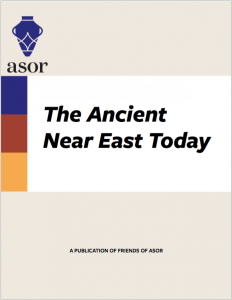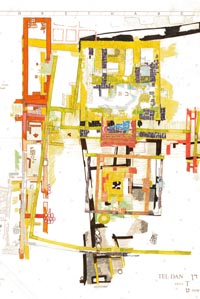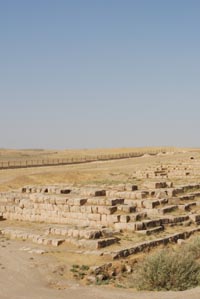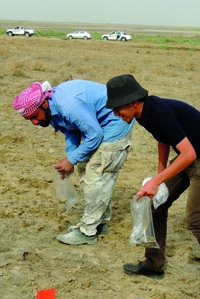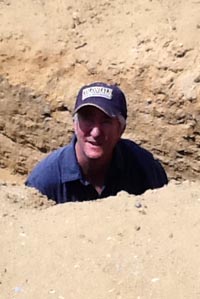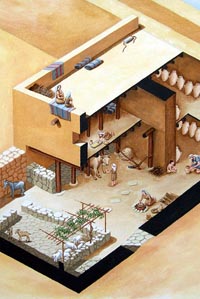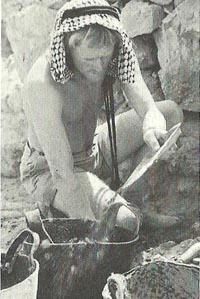

January 2014
Vol. 2, No. 1
Welcome to The Ancient Near East Today, Vol. II, No. 1 (the first of 2014)! We look forward to another year of bringing you important news and ideas from the ancient Near East, both past and present. This month, Jonathan Greer discusses sacrifices – and the Bible – at Tel Dan, while Daniele Bonacossi and Jane Moon describe their exciting new field projects in Iraq, which are bringing to light wholly new aspects of Mesopotamia. Also, Peter Herdrich brings us up to date on an important new initiative to protect Egyptian antiquities, one in which ASOR has a leading role, and Doug Clark reviews the sticky problem of conflicts between land owners, archaeologists, and the state in Jordan.
As always, we encourage you to send The Ancient Near East Today articles to family and friends, post links to Facebook and Twitter, and to be in touch with the editor. Remember, being a Friend of ASOR is free, so please spread the news!
 New Archaeological Data for the Study of Ancient Israelite Religion and Society from Tel Dan
New Archaeological Data for the Study of Ancient Israelite Religion and Society from Tel Dan
By Jonathan S. Greer
Not all exciting archaeological discoveries, even those related to Israelite religion, are made in field. Some come after the end of the season, in the lab, or even long after the dig has concluded, after scouring records and analyzing material from storerooms.
READ MORE
 Back to Assyria: Cities, Villages, and Canals in the Land behind Nineveh
Back to Assyria: Cities, Villages, and Canals in the Land behind Nineveh
By Daniele Morandi Bonacossi
Decades of conflict culminated in the genocidal Anfal campaign waged against the Kurds in 1988 by Saddam Hussein’s regime. Now, the stabilization and autonomy of Iraqi Kurdistan have been accompanied by the development not only of political, economic, and social life, but also education, culture, and scientific research.
READ MORE
 Back to Babylonia
Back to Babylonia
By Jane Moon
The cities of Babylonia, Ur and Uruk, Larsa and Lagash, the very heart of Babylon itself, are the warp-threads of our understanding of ancient Near Eastern civilization. International fieldwork in this seminal area of Southern Iraq petered out in the early 1990s, and in the Ur region, no major excavation had taken place since the 1940s.
READ MORE
 How ASOR is Helping to Protect Egyptian Antiquities
How ASOR is Helping to Protect Egyptian Antiquities
By Peter Herdrich
Efforts to save Egyptian antiquities are picking up speed. But whose responsibility is it? The Washington Post recently published an opinion piece by Mohammed Ibrahim, Egypt’s minister of antiquities, under the headline, “Egypt’s stolen heritage.”
READ MORE
 Who Owns This Part of the Past? The Cultural Heritage of Tall al-`Umayri, Jordan in Jeopardy
Who Owns This Part of the Past? The Cultural Heritage of Tall al-`Umayri, Jordan in Jeopardy
By Douglas R. Clark
Is culturally significant land private or public property? What happens when a major, signature archaeological site is owned privately? Who owns this part of the past? How does one resolve competing claims of ownership and use?
READ MORE
 Qumran Revisited: a Reassessment of the Archaeology of the Site and its Texts
Qumran Revisited: a Reassessment of the Archaeology of the Site and its Texts
By Gregory L. Doudna
A recent post on the ASOR Blog by C.D. Elledge and Olivia Yeo (“Rethinking the ‘Qumran Community’: Recent Approaches”, December 13, 2013) closes with three questions in understanding Qumran identified as likely to shape future studies…
READ MORE
 Mapping Ancient Canal Systems in Khuzistan
Mapping Ancient Canal Systems in Khuzistan
By Mehrnoush Soroush
At the 2013 ASOR Annual Meeting Mehrnoush Soroush presented the paper “Mapping Ancient Canal Systems in Khuzistan: A Critical Application of Site-Canal Association Technique.” She agreed to come in and record the presentation for the ASOR YouTube channel ASORtv. Below is an abstract of the presentation and the embedded video of the paper.
READ MORE
